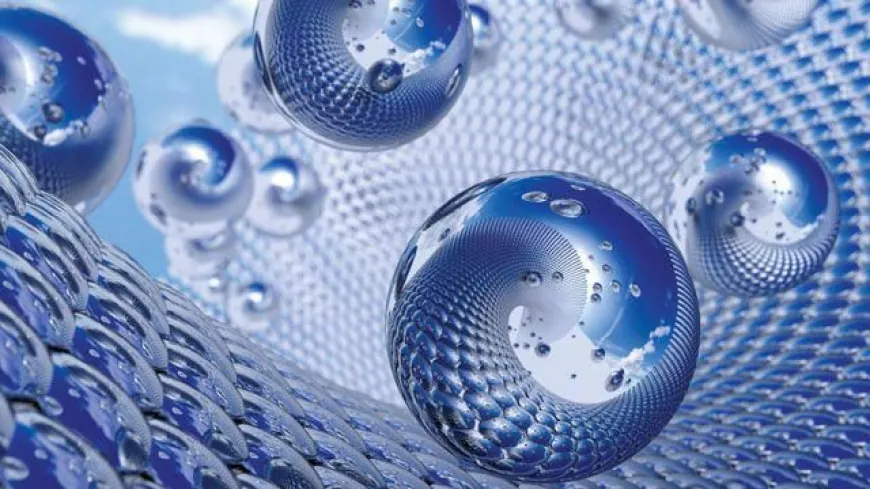Nanoparticles: Unleashing the Growth Potential of the Microbusiness Sector In Industry
Nanoparticles

Nanocrystal are ultra-small particles that are measured in nanometers. A nanometer is one billionth of a meter, which is small enough to see only via high-powered electron microscopes. At this tiny scale, nanocrystal often exhibit unique properties compared to their larger-sized counterparts. Many materials, including metals, metal oxides, carbon compounds and more can exist in nanoparticle form. In this article, we'll explore some key aspects of nanocrystal including their applications across various industries.
Size-Dependent Nanoparticles
One of the most fascinating things about nanocrystal is how their properties change depending on size at the nanoscale. For example, gold is an inert yellow metal in its bulk form but gold nanocrystal can appear purple, pink or other colors depending on size due to their optical properties shifting. Titanium dioxide nanocrystal are also optically transparent like the macroscale version but exhibit UV blocking abilities when produced at the nanoscale. Size impacts other attributes such as melting point, chemical reactivity and electrical conductivity in nanocrystal versus larger particles of the same material. Carefully controlling size during nanoparticle production allows tuning these size-dependent effects for various applications.
Nanocrystal in Medicine
The medical field has greatly benefitted from the unique properties of Nanoparticles. Gold and iron oxide nanocrystal are commonly used as contrast agents in medical imaging to enhance clarity. Due to their small size, nanocrystal can target specific areas in the body like tumors for drug delivery applications. Some encapsulate and slowly release chemotherapy drugs at targeted sites for fewer side effects than traditional intravenous treatment. Antimicrobial nanocrystal containing metals like silver destroy harmful bacteria while being biocompatible. Research continues on nanocrystal that help regenerate tissues or sense and report biomarkers for various diseases.
Clean Energy and Environmental Uses
Nanocrystal also show promise for sustainability applications. Titanium dioxide and zinc oxide nanocrystal are popular photocatalysts that harness sunlight to break down environmental pollutants like VOCs or transform CO2 into fuels. Cerium oxide nanocrystal act as water purification agents by neutralizing radicals in water treatment. Battery performance has been boosted through lithium metal oxide and silicon nanocrystal. In sustainable construction, nanoparticulate cement and asphalt improve strength and durability of infrastructure while reducing material needs. Researchers explore nanocrystal to remediate hazardous soils and detect groundwater contaminants as well.
Nanocrystal in Consumer Products
More consumers interact with nanocrystal every day than may realize. Products like sunscreens rely on metallic oxide nanocrystal like zinc oxide or titanium dioxide to provide sun protection with transparent finishes. Nanosilver particle coatings are applied to textiles, plastics and other materials for antimicrobial effects to prevent odors. Non-stick coatings containing silica nanocrystal are commonly found in cookware. LCD screens contain rare-earth element oxides as nanocrystal for vivid colors with low power needs. Carbon-based nanocrystal give reinforcement and conductivity enhancement in bicycles, cars and other applications. As nanotechnology innovation continues, we will undoubtedly see more consumer goods benefitting from nanocrystal in the future.
Challenges and Regulation
While nanocrystal offer much potential benefit across industries, their ultra-small size also poses certain challenges associated with health and environmental impacts that require careful consideration. Researchers continue studies on the toxicity and biological fate of different nanocrystal, with certain metal and carbon-based varieties currently raising more health concerns than others. Regulatory agencies work to establish guidance on appropriate production, use and disposal standards for various applications to ensure human and environmental safety. Public education is also important so that consumers are aware of potential nanoparticle interactions in everyday products. Overall nanotechnology shows great promise if developed responsibly through collaborative research and informed guidance.
In conclusion, nanocrystal demonstrate size-dependent optical, chemical and other unique properties with wide-ranging applications across industries from medicine to energy to consumer products. Continuous research further unlocks their potential while also ensuring human and environmental safety. With prudent development and oversight, nanocrystal will surely transform sectors for the better as an outcome of nanotechnology innovation. Their ultra-small scale opens doors to new modes of interaction with materials at the molecular level.
Get more insights on Nanoparticles
Discover the Report for More Insights, Tailored to Your Language
French | German | Italian | Russian | Japanese | Chinese | Korean | Portuguese
About Author:
Money Singh is a seasoned content writer with over four years of experience in the market research sector. Her expertise spans various industries, including food and beverages, biotechnology, chemical and materials, defense and aerospace, consumer goods, etc.












